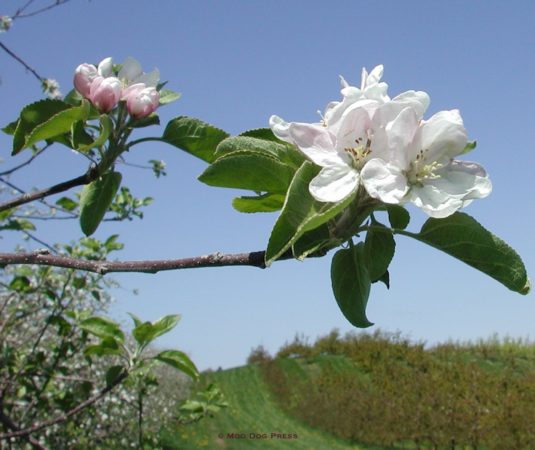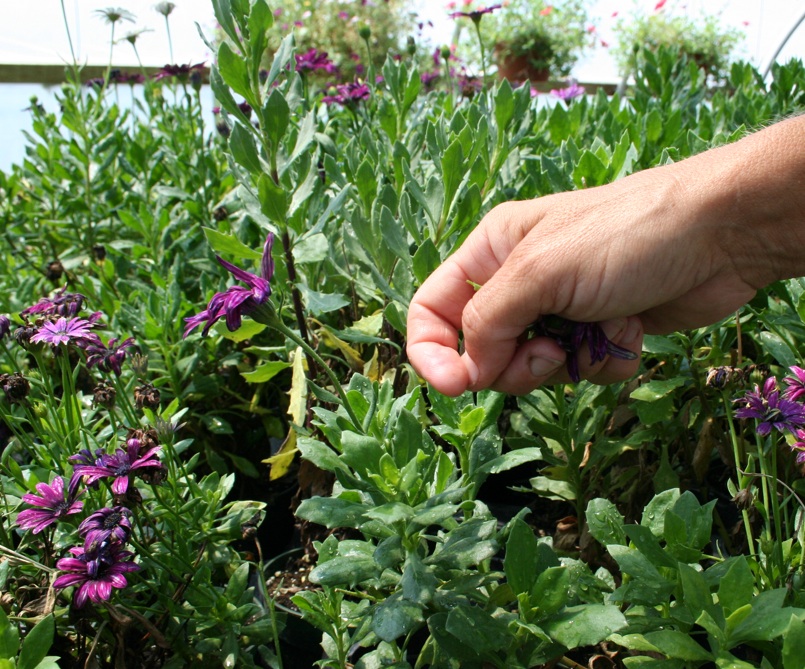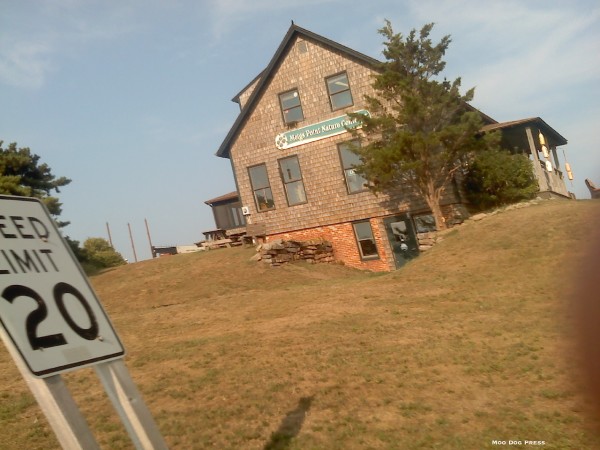Timeless Cycles: On-The-Go Solutions, Tech, Ocean Resources, Let’s Go
Cross pollination. Spring is a time when trees need bees, but that lesson of give and take that is so beneficial also applies for humans and information, ideas and platforms, events that teach and entertain. Learn something new every day.
So, new ways to accept payments at an event or on a tour – technology applies to farm markets, small business, entrepreneurs – a report aimed at farmers (but applies to any business) via Farm and Dairy.
Excerpt: “New technology for small businesses allows farmers to process payments anywhere sales happen — at the market, on the farm or online. Companies like Square, PayPal Here and Payline Data offer mobile credit card processing to fit farmers’ needs. Plug a mobile card reader into your smartphone or Wi-Fi enabled tablet and then swipe, insert, tap, or key-in credit card numbers. Contactless chip readers securely process EMV (Europay, Mastercard, and Visa), and NFC (Near Field Communication) like Apple Pay. Card readers cost anywhere from $0 to $149 depending on the host company and technology. The average per transaction fee is 2.7 percent per swipe, insert or tap. Key-in fees average 3.5 percent + .15 per transaction.
“Shopify provides an online platform for farmers to build an e-commerce website from scratch. Shopify also provides tools to help farmers sell products and process credit card payments from sales on social media.”
For more information, here is the link.
Now for some notable events and happenings.
The Friends of Hammonasset Plant Sale is ongoing to May 23 (or when sold out), Madison. Good variety of premium hanging baskets, perennials, plus – weather permitting – 4-inch annuals and flats of bedding plants and vegetables. Look for the sale .3 miles east of the main entrance to Hammonasset Beach State Park on Route 1. Folks are invited to contribute potted perennials from their own gardens to the sale, 9 a.m. to 5 p.m. daily, 7 days a week. For additional information call (203) 245- 9192. The sale supports Friends of Hammonasset environmental education and year-round work to preserve the park’s natural resources and as an advocate for Hammonasset Beach State Park. This year’s proceeds will be committed to fund exhibits and furnishings for the new nature center constructed at Meigs Point.

At the entrance to Hammonasset Beach State Park, a glacial erratic – and a story of the man for which it is named. Ask about the tribe, the reason for the park's name, and see artifacts found on site here at the Megs Point Nature Center. Need directions? Ask one of the Friends of Hammonasset State Park; image linked to the Nature Center.
Learn about herbs at Prescott Farm with Master Herbalist Melissa Morrison. The Herbal Pathfinder Series is a series of classes (once a month, May through October) to learn how to identify herb medicine plants of the fields and forest, how to harvest and then use the herbs. Prescott Farm Environmental Education Center, 928 White Oaks Rd., Laconia, NH; fee is $35 per class (one has already taken place); for information (603) 366-5695.
Tickets still available to Textile Treasures II Digging Deeper tour hosted by Webb-Deane-Stevens Museum, Saturday, June 3, 10:30 a.m. to 3 p.m., 211 Main St., Wethersfield. Go behind-the-scenes to view a rare and remarkably well-preserved collection of 17th-and 18th-century clothing, shoes, and textiles. Event information via Facebook, linked here.
Massachusetts Farm Bureau Federation and Nourse Farms in Whately are planning ‘Camping for a Cure‘ on June 10. This is a fundraiser for the Massachusetts Farm Bureau Federation’s Pan-Mass Challenge team. Currently, five farmers are set to ride more than 750 miles combined on Aug. 5 and Aug. 6 to provide cancer patients, who can’t ride in this bike-a-thon, with hope and support.
Unlike most charities, the PMC donates 100 percent of the funds raised.
Last year the organization raised more than $47 million for Dana-Farber Cancer Research Institute, which is more than 80 percent of the institute’s annual funds. For this reason, the PMC is much more than a ride, it’s a source of hope for those whom may have little to none. You can learn more at www.pmc.org or see http://profile.pmc.org/TM0329.
To help, agricultural organizations or other groups can help by providing an educational or fun activity or craft or helping out for an hour or so to help campers set up tents at the Camping for a Cure event. Among the farms who have already made a commitment are Nourse Farms in Whately, Davidian Bros Farm in Northborough, Pine Island Farm in Sheffield, Sauchuk Farm in Plympton and Willow Brook Farm in Holliston.
During these events, young families will have the opportunity to experience farm life. During the day, each campsite will host a children’s fair, during which a petting farm, horse pulled wagon rides, face painting, read-along, coloring events and other activities. Later, a camp-out and a movie for the evening.
To volunteer or for more information, contact Pete Rizzo, horticulturalist at Nourse Farms (UMass Sustainable Food and Farming Graduate 2011); (413) 665-2658 extension 222; prizzo@noursefarms.com.
As water flows downhill, and all leads to the sea. Where does the local catch on your dinner plate originate?
That's why news from the Sea Grant programs of Connecticut and New York may be of interest.
More than $676,000 in Long Island Sound Study research grants to three projects that will look into some of the most serious threats to the ecological health of Long Island Sound, a water body designated by the Environmental Protection Agency as an Estuary of National Significance. The Long Island Sound Study, conducted under the EPA’s National Estuary Program, is a cooperative effort between the EPA and the states of Connecticut and New York to restore and protect the Sound and its ecosystems.This suite of projects addresses the cycling of nitrogen, phosphorus, and carbon through the Sound and its surrounding tributaries and wetlands.
The three projects are: How will Sea Level Rise-driven Shifts in Wetland Vegetation Alter Ecosystem Services?
Researchers: Beth Lawrence, Ashley Helton, Chris Elphick (University of Connecticut), total $317,828 plus $79,458 in matching funds.
Coastal marshes that fringe Long Island Sound are the dynamic ecosystems between land and sea that provide essential “ecosystem services” to surrounding communities such as improved water quality, carbon removal to the sediment, and protection from storm surge. However, as these valuable wetlands are increasingly altered by rising seas, invasive species and increased salinity, there are changes in carbon and nitrogen cycling as well as in plant species composition. Research conducted by Beth Lawrence and her team at the University of Connecticut will increase understanding and improve coastal management by explicitly quantifying the direct and indirect effects of sea level rise on carbon and nitrogen cycling. The results will be extended to a broad audience by developing a series of questions and problems for high school students that integrates a case study of how sea level rise is altering coastal ecosystems associated with Long Island Sound.
Nutrient and Carbon Fluxes through Long Island Sound, Linking River Sources to Impacted Areas
Researchers: Michael Whitney and Penny Vlahos (University of Connecticut), total $278,851. In Long Island Sound, the quality of its waters and health of its biological communities are strongly influenced by the concentration and movement of nutrients like nitrogen and phosphorus in the water. Both nitrogen and phosphorus, as well as carbon enter the Sound through rivers and are consumed and transformed along the way. University of Connecticut marine scientists Michael Whitney and Penny Vlahos will study sources, movement, and fates of these materials, as well as their flow from wastewater treatment plants, to understand the input from river sources and impacted areas. This will help determine the nature of sources and whether certain locations can store carbon. The results will inform management decisions for the Sound.
Sources and fluxes of excess nitrogen supplied by fresh submarine groundwater discharge (FSGD) to Long Island Sound
Researchers: Troy Rasbury, Kirk Cochrane and Henry Bokuniewicz (Stony Brook University); total $119,776 plus $39,775 in matching funds. Fresh submarine groundwater discharge along Long Island’s north shore is an important source of nitrogen loading into the Sound. In some locations this discharge supplies as much nitrogen to bays as a local river and about 10 to 40 times as much as a local wastewater treatment plant. However, identifying whether the nitrogen source is natural or from a synthetic source (such as fertilizer) is difficult. Researchers from Stony Brook University will use a unique combination of isotope tracers to fingerprint the sources of nitrogen to groundwater as well as processes that affect nitrogen concentrations. The team will be able to quantify atmospheric, septic, animal waste, and fertilizer sources of new nitrogen entering the Sound via groundwater discharge in three “hot spots” with varying land use.
Since 2000, the Long Island Sound grant program has awarded more than 30 grants to scientists whose work helps meet the needs of decision-makers to improve the management of Long Island Sound. For information, visit www.longislandsoundstudy.net/research; www.seagrant.sunysb.edu; http://seagrant.uconn.edu. Last, but not least, why humans should care about horseshoe crabs and the life in the ocean: https://ctt.ec/2R33E+ (By our editor, 2006.)







